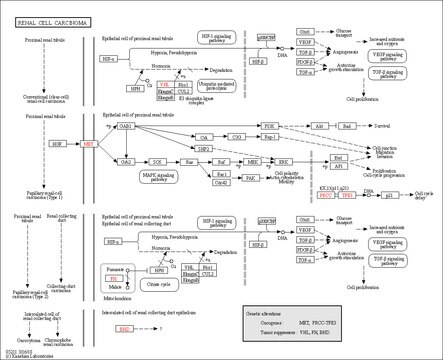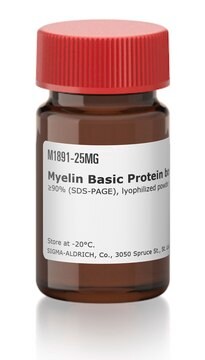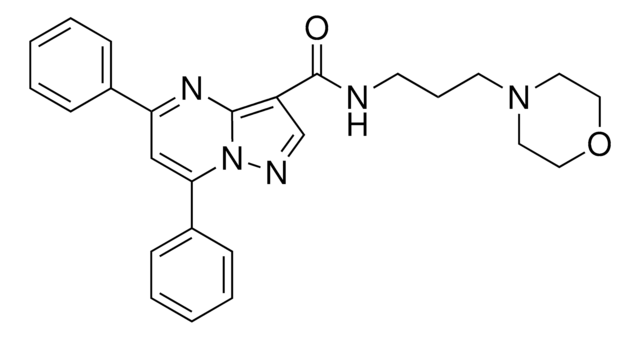F7930
FGFR3 (397-end), active, GST tagged human
PRECISIO® Kinase, recombinant, expressed in baculovirus infected Sf9 cells, ≥70% (SDS-PAGE), buffered aqueous glycerol solution
Synonym(s):
Eph receptor tyrosine kinase, growth hormone receptor, ACH, CD333, CEK2, HSFGFR3EX, JTK4
About This Item
Recommended Products
biological source
human
Quality Level
recombinant
expressed in baculovirus infected Sf9 cells
product line
PRECISIO® Kinase
Assay
≥70% (SDS-PAGE)
form
buffered aqueous glycerol solution
specific activity
95-129 nmol/min·mg
mol wt
~73 kDa
packaging
pkg of 10 μg
technique(s)
cell based assay: suitable
solubility
water: soluble
Protein ID accession no.
UniProt accession no.
shipped in
dry ice
storage temp.
−70°C
Gene Information
human ... FGFR3(2261)
General description
FGFR3 (fibroblast growth factor receptor 3) is a receptor tyrosine kinase (RTK) and belongs to the FGFR subfamily. This subfamily includes four members namely, FGFR1, FGFR2, FGFR3, and FGFR4. It contains a ligand-binding region in its exoplasmic domain, a single transmembrane region, and a tyrosine kinase domain in its intracellular domain.FGFR3 has a strong affinity for canonical FGF ligands.
Biochem/physiol Actions
Physical form
Legal Information
Storage Class Code
10 - Combustible liquids
WGK
WGK 1
Flash Point(F)
Not applicable
Flash Point(C)
Not applicable
Personal Protective Equipment
Certificates of Analysis (COA)
Search for Certificates of Analysis (COA) by entering the products Lot/Batch Number. Lot and Batch Numbers can be found on a product’s label following the words ‘Lot’ or ‘Batch’.
Already Own This Product?
Find documentation for the products that you have recently purchased in the Document Library.
Our team of scientists has experience in all areas of research including Life Science, Material Science, Chemical Synthesis, Chromatography, Analytical and many others.
Contact Technical Service






